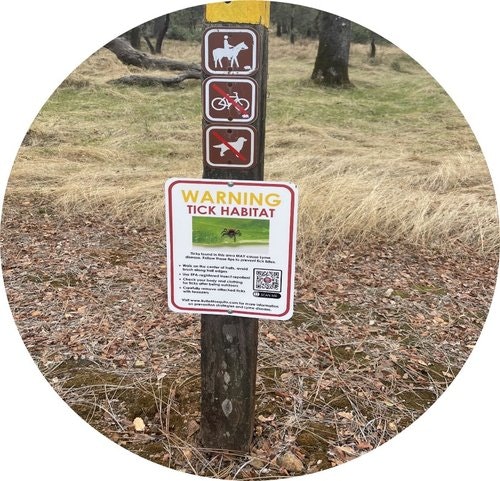Tick Surveillance

Tick surveillance in Butte County is done primarily because of the diseases that ticks can transmit. The District collects Western black-legged ticks (Ixodes pacificus) to test for the presence of two diseases that infect humans most often are Lyme disease and Tick-borne relapsing fever (TBRF). Lyme disease is an infectious disease caused by a bacterium, Borrelia burgdorferi.
People can get Lyme disease when an infected Western black-legged tick attaches to it’s human host. District tick surveillance consists of “flagging”, identifying, and testing. A tick flag is made by attaching a 3’ x 2’ piece of fibrous cloth to a pole to resemble a flag. It is then swept horizontally across dense vegetation or leaf litter where a tick is most likely to be questing. The ticks attach themselves to the cloth while they are “questing” for a blood meal. Once the ticks are attached to the cloth they are identified, counted, recorded, put into pools of five, and then sent off for testing.

